Pop Gun War / New Deal Photography
Issue No. 65
POP GUN WAR – WHAT HAPPENS WHEN A BOY IN A SEEDY WORLD FINDS ANGEL WINGS IN THE TRASH?
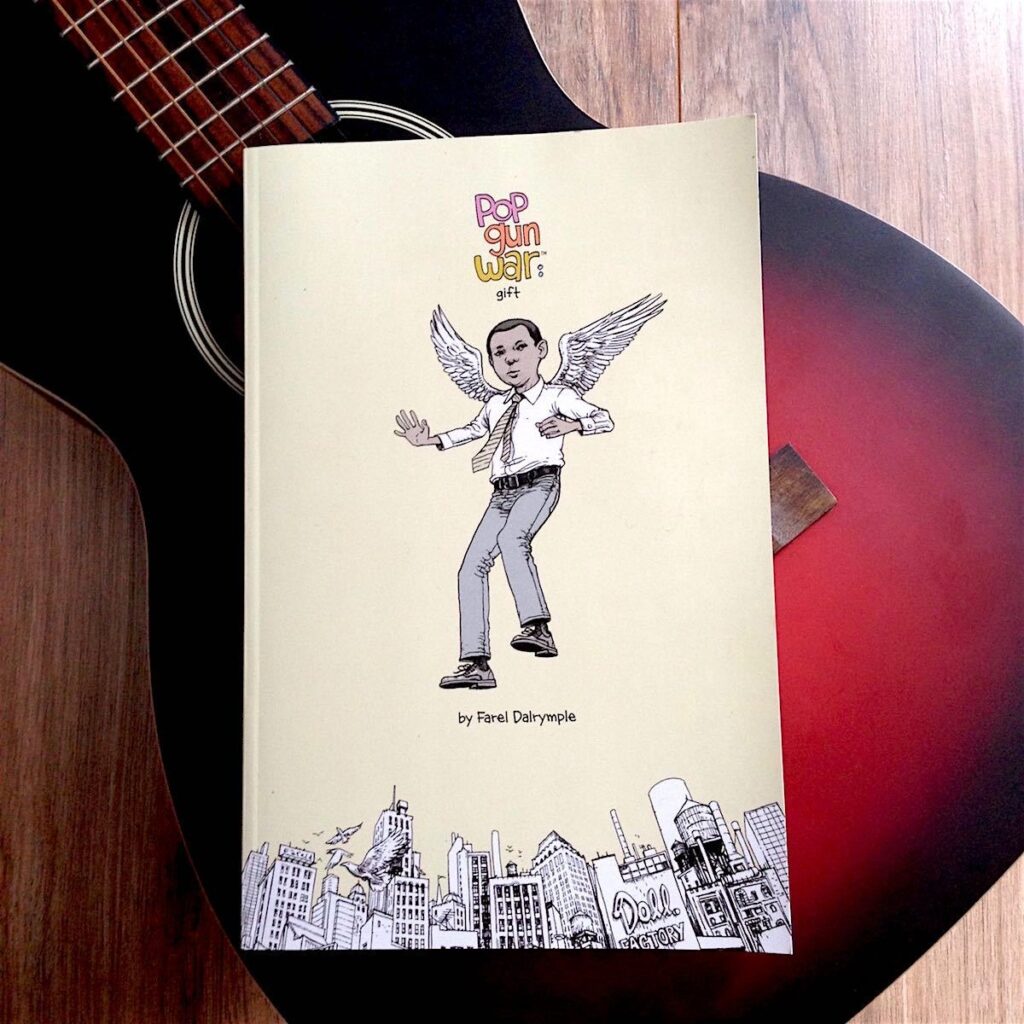
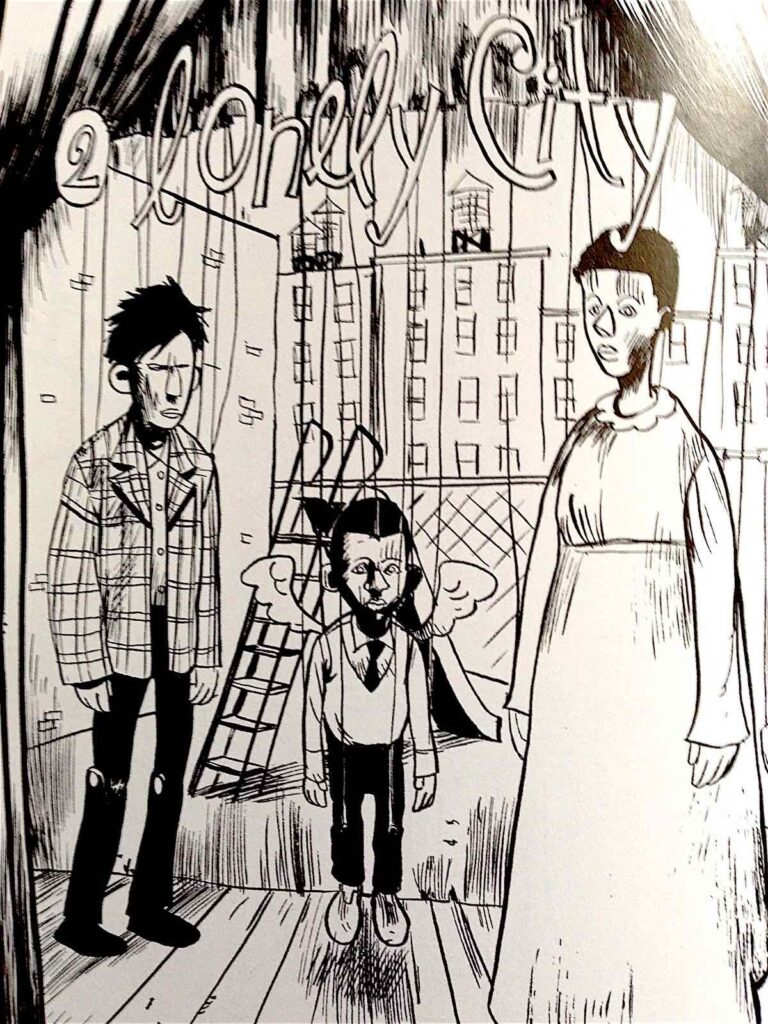
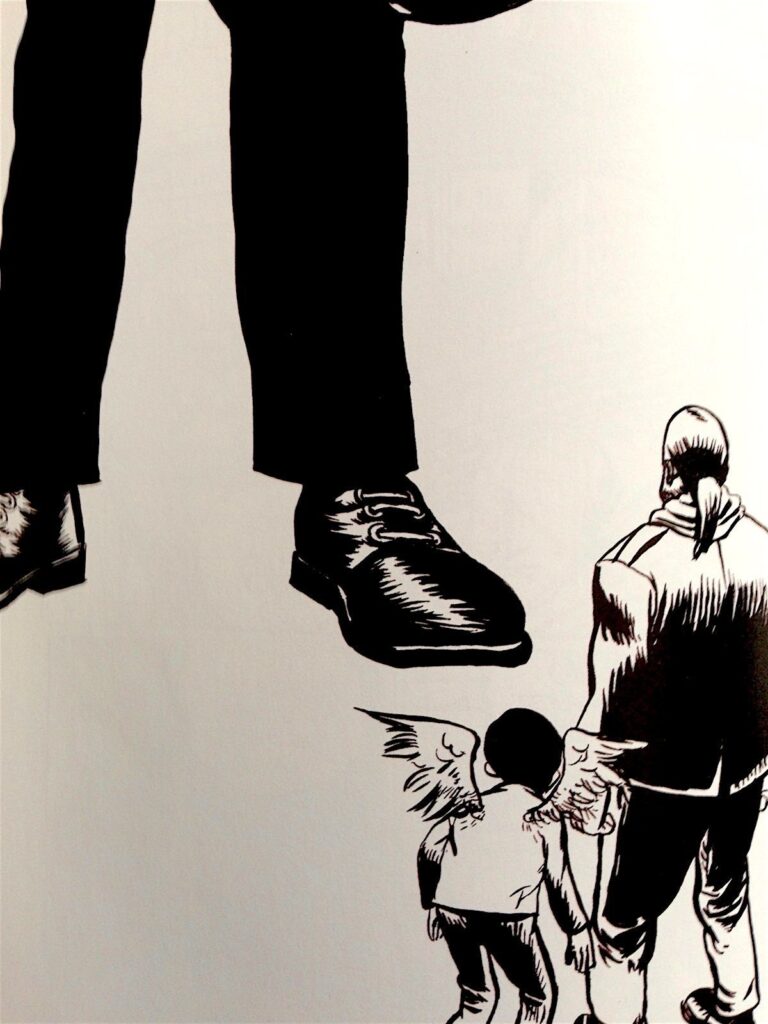
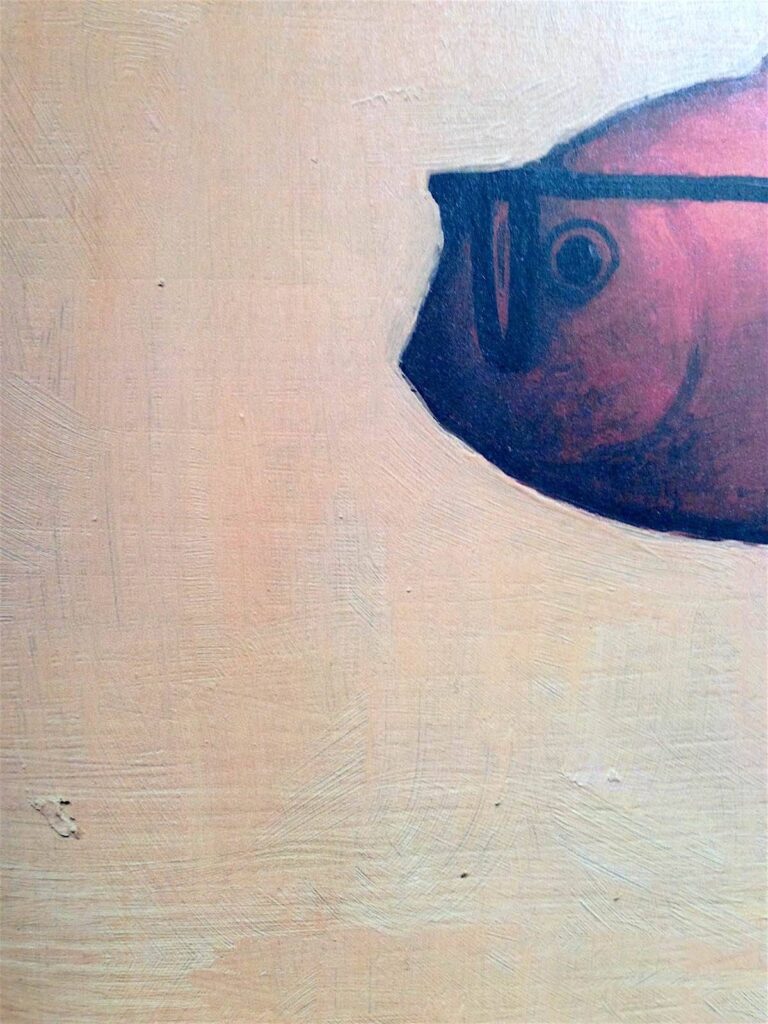
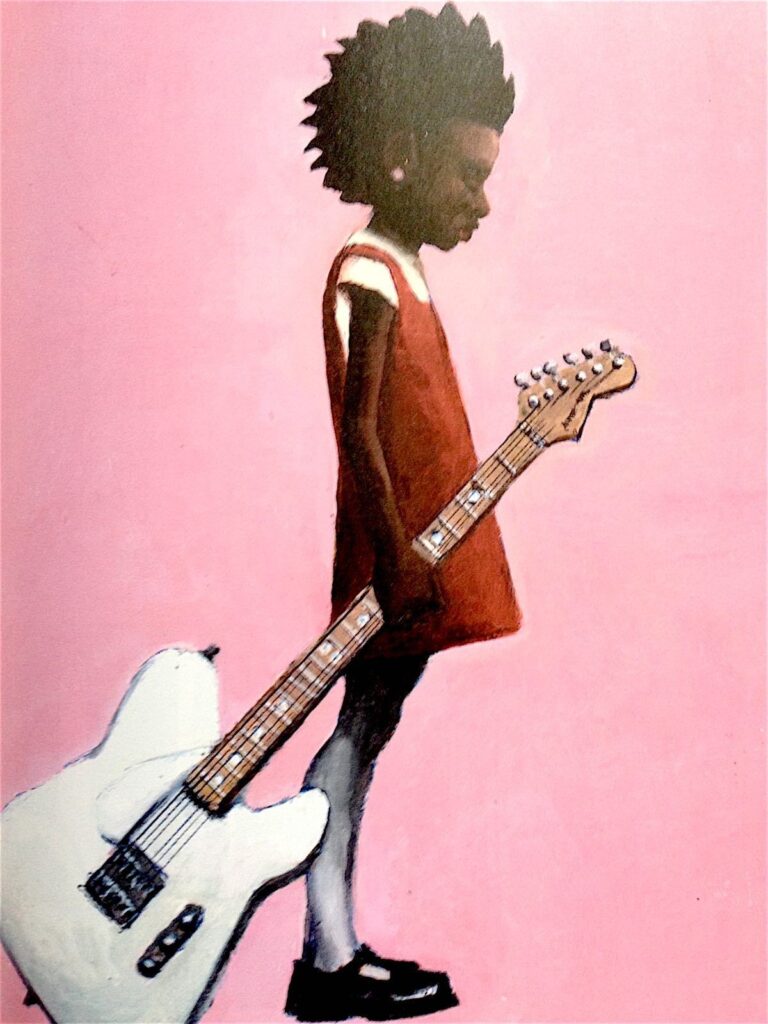
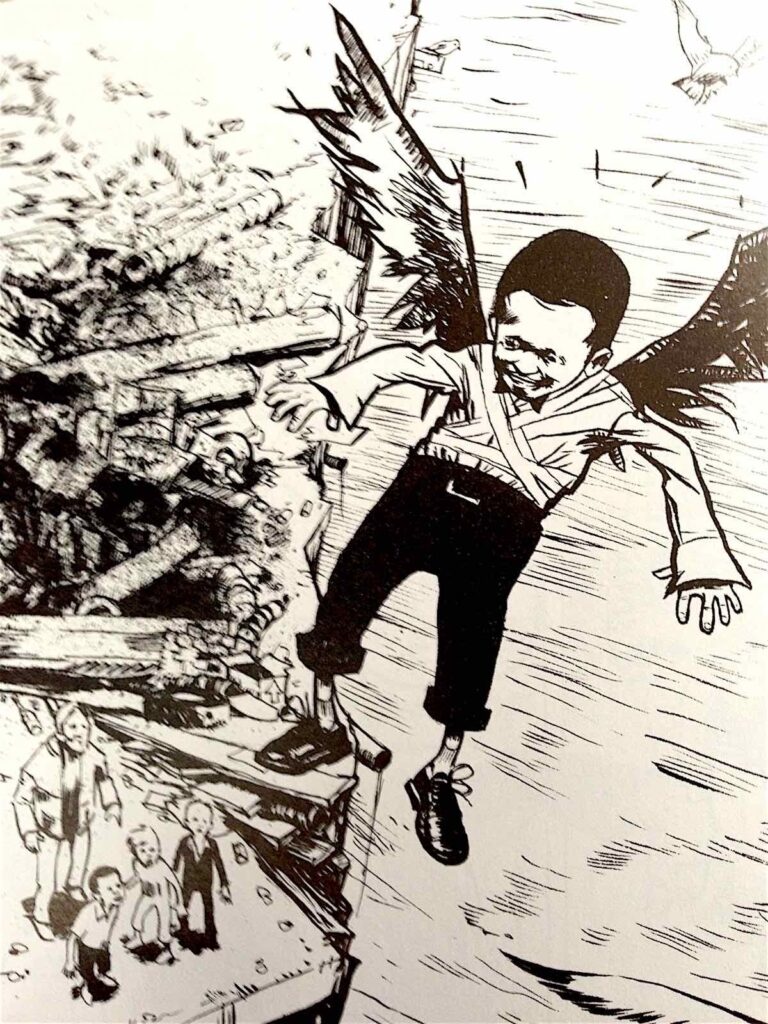
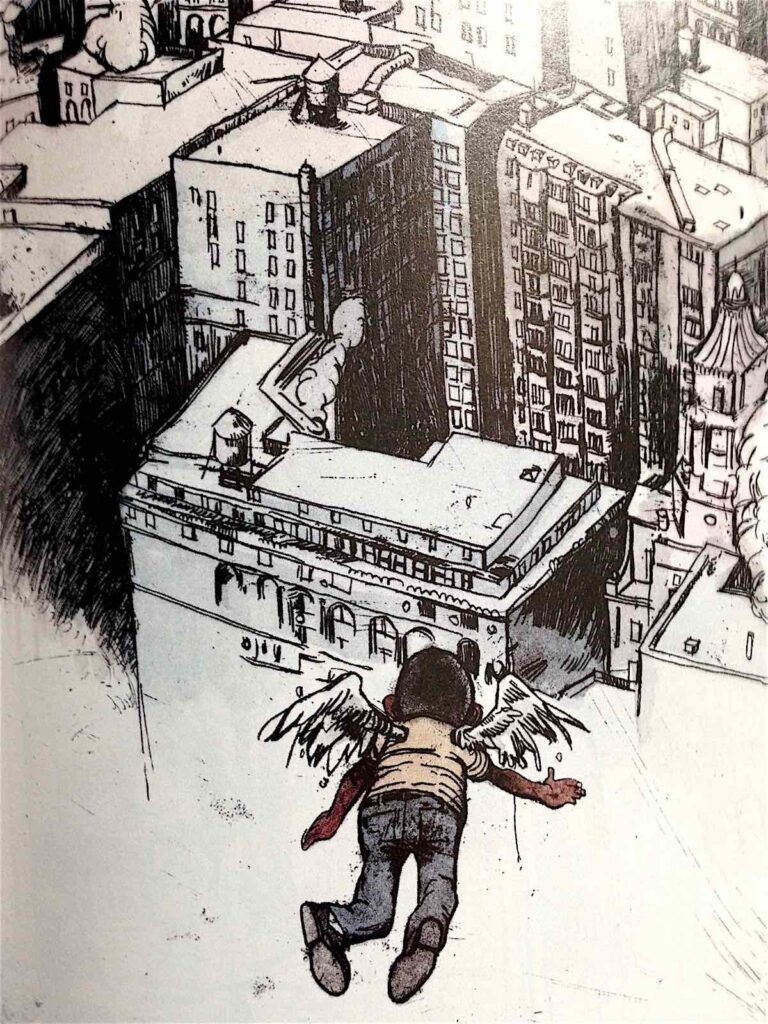
Pop Gun War Volume 1: Gift
by Farel Dalrymple
Image Comics
2016, 144 pages, 6.4 x 10 x 0.5 inches (softcover)
A boy pulls a pair of discarded wings from a garbage can, placed there by the tattooed angel who paid to saw them off. In a city where giant goldfish are used like poker chips in seedy bars, gangs roam the streets and life is hard. The boy straps the discarded angel wings to his back, and after being knocked from it by a rock-throwing hooligan, he gingerly takes flight from a rooftop apartment building.
Amidst a gritty urban landscape and surreal images, Pop Gun War: Gift is grounded in reality and touched by dreams, and dreams of dreams. Characters grow to enormous height. A puppet master lures the city’s children to his puppet theater to keep them safe. An oversized goldfish clad in nerdish glasses levitates. A man gives everything a label because people don’t always know what things are. A cloak-clad monk hides the fact that he is burdened by chains. A woman’s severed head hidden in a handbag cajoles kids into littering and smoking. Incensed by a flying child, people inexplicably, violently smash car windows with baseball bats.
With sparse dialogue, non sequiturs, and a stream-of-consciousness storyline, Pop Gun War: Gift’s boldly drawn black-and-white drawings and full-page paintings in colorful oils illuminate a thoughtful tale of a young boy who found the wings he always had. – S. Deathrage
TASCHEN’S HEFTY NEW DEAL PHOTOGRAPHY GOES WELL BEYOND FAMILIAR DEPRESSION-ERA IMAGES
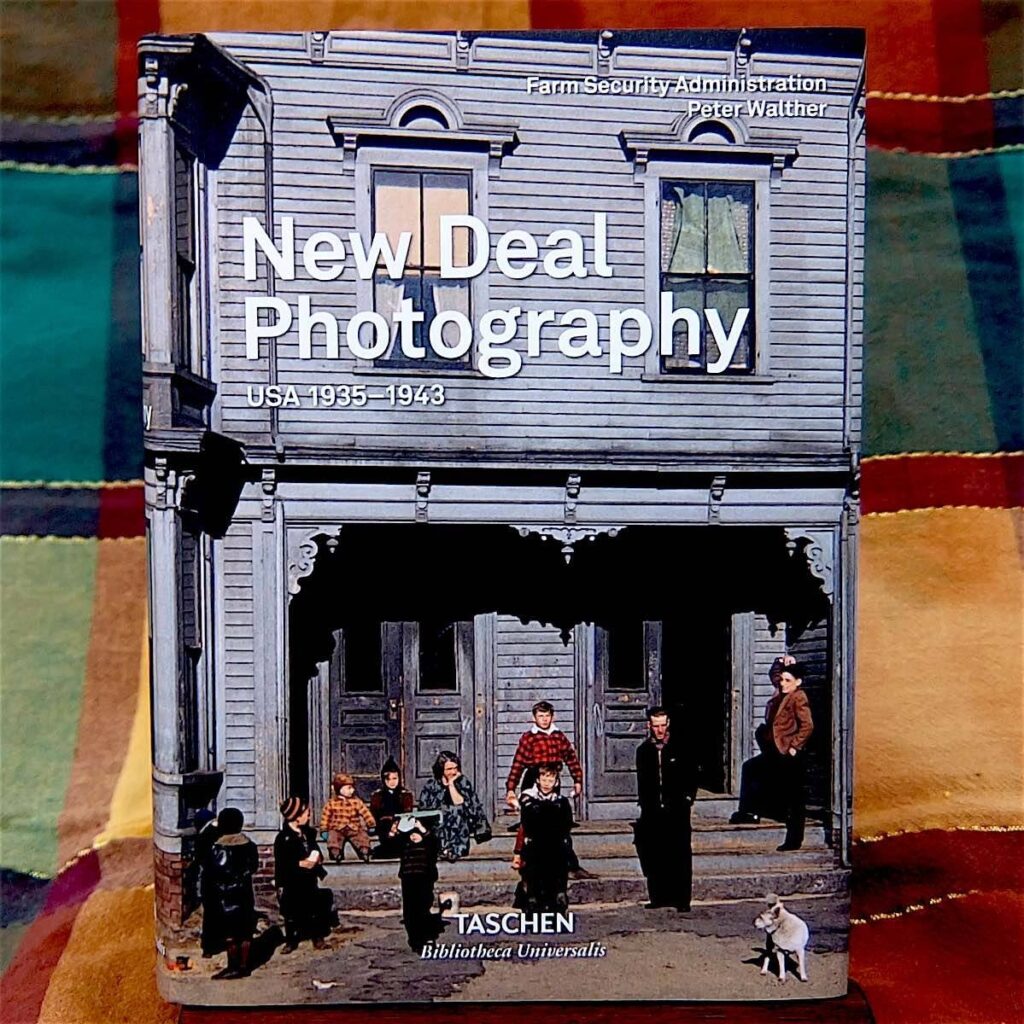
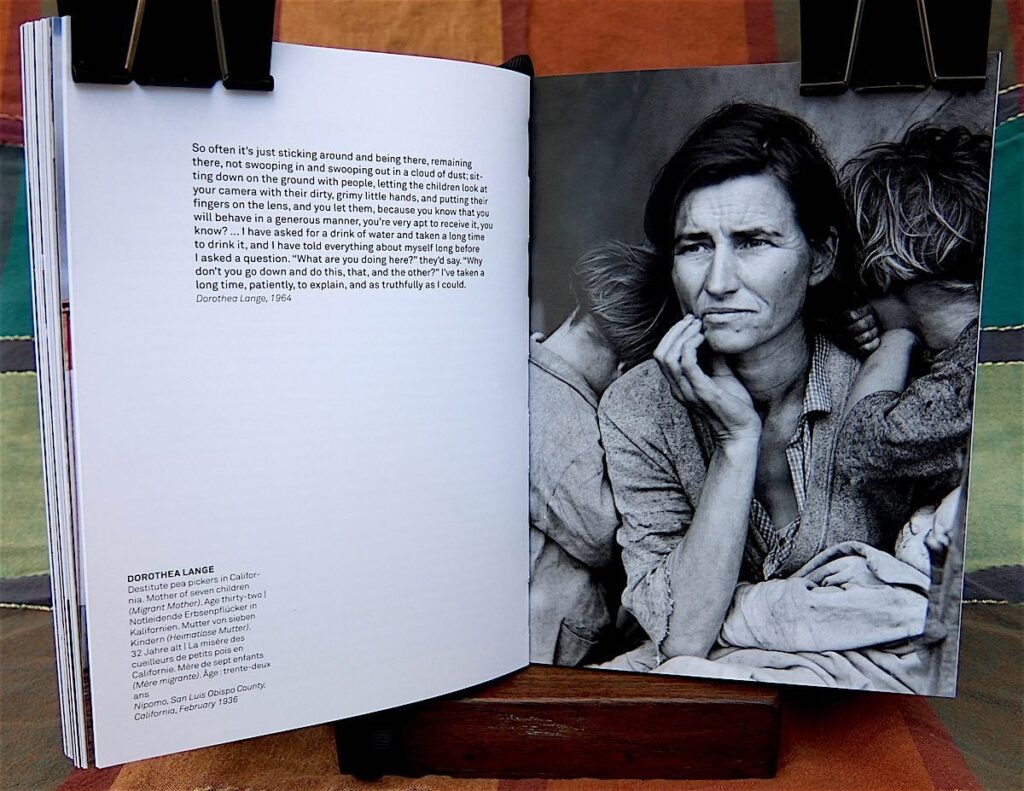
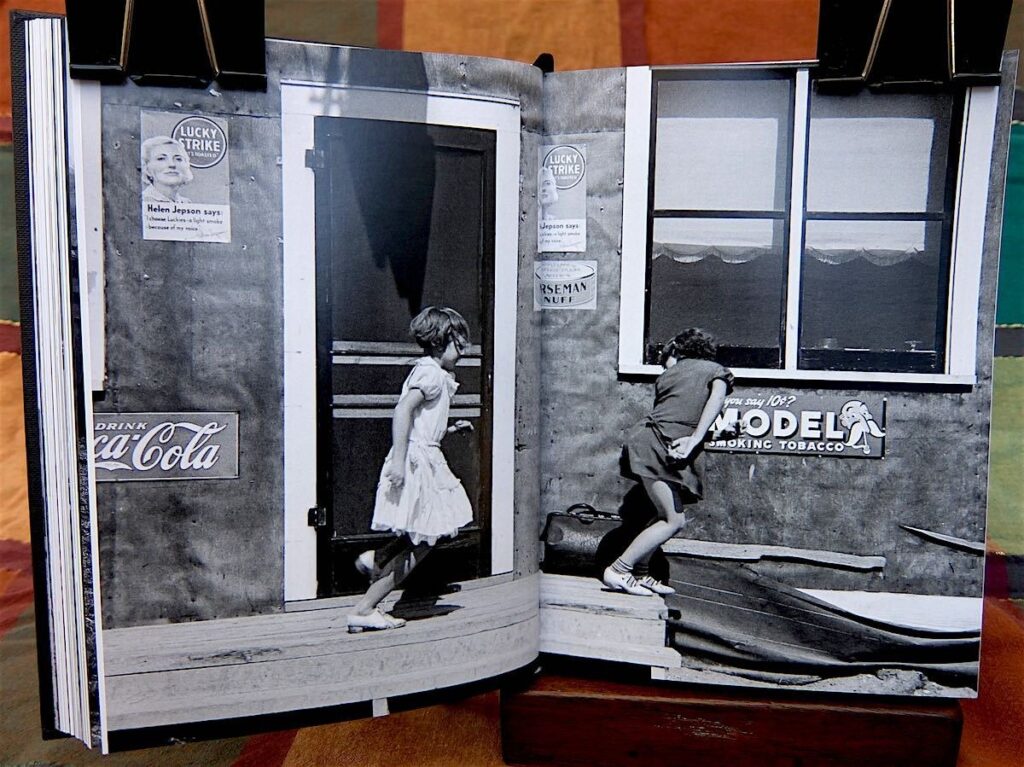
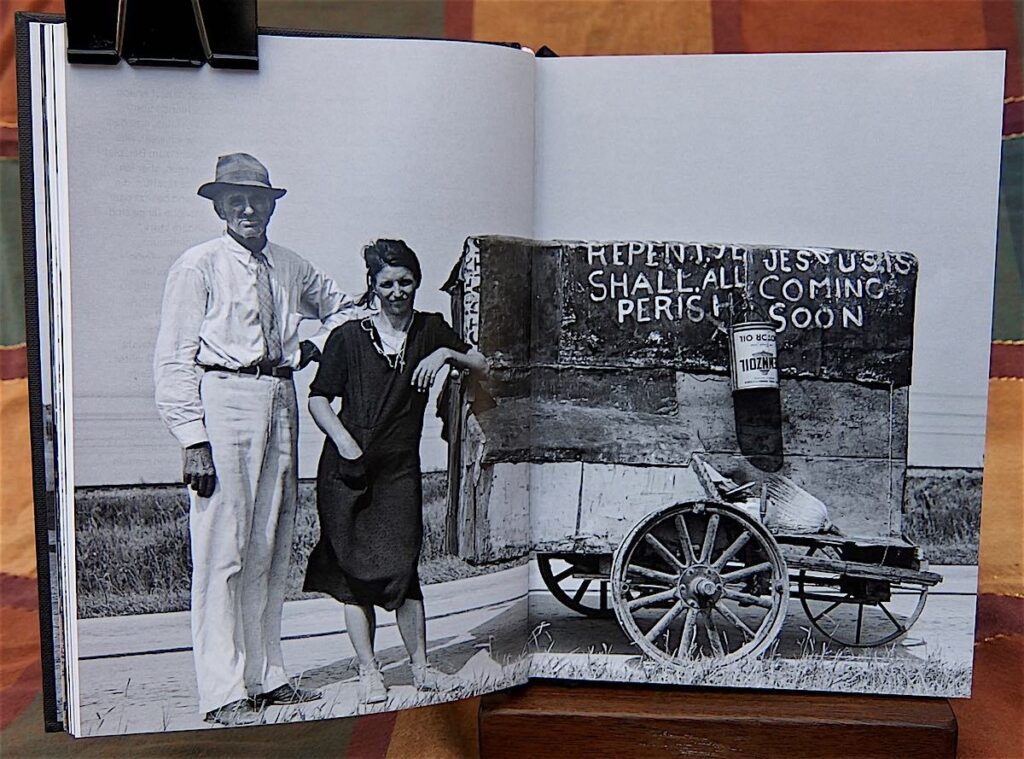
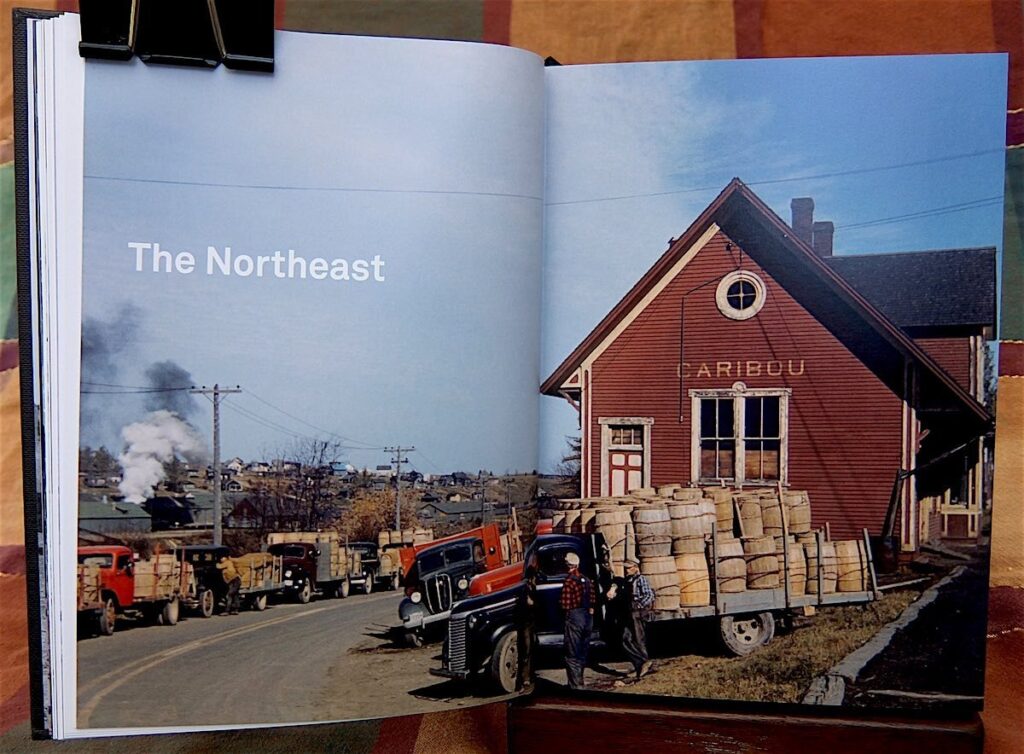
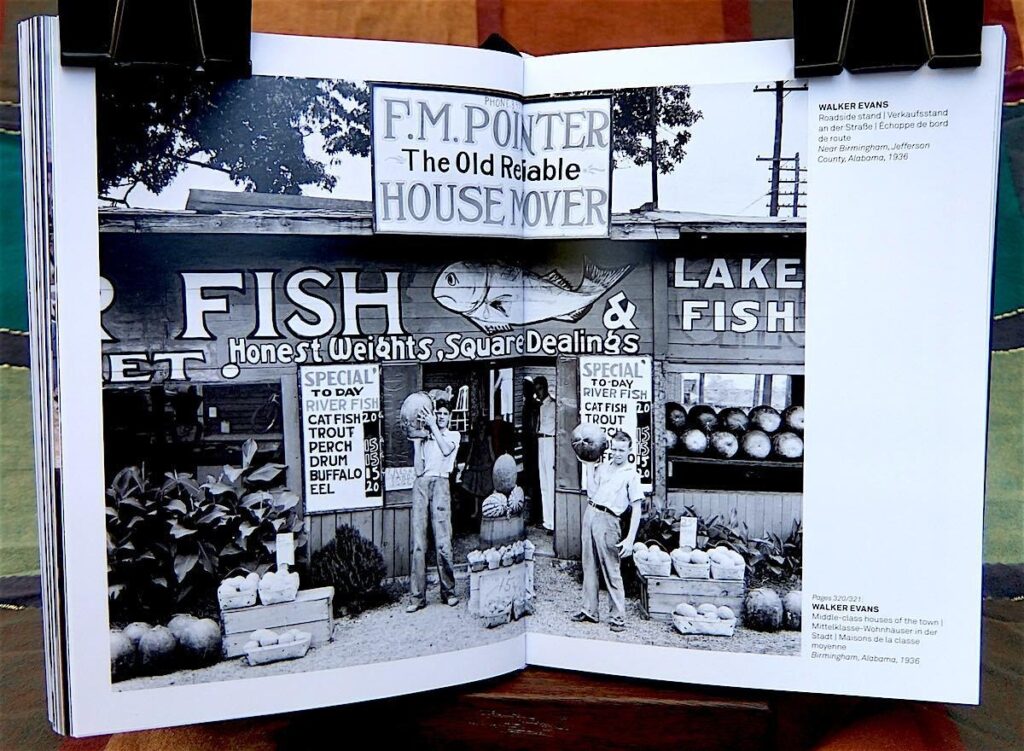
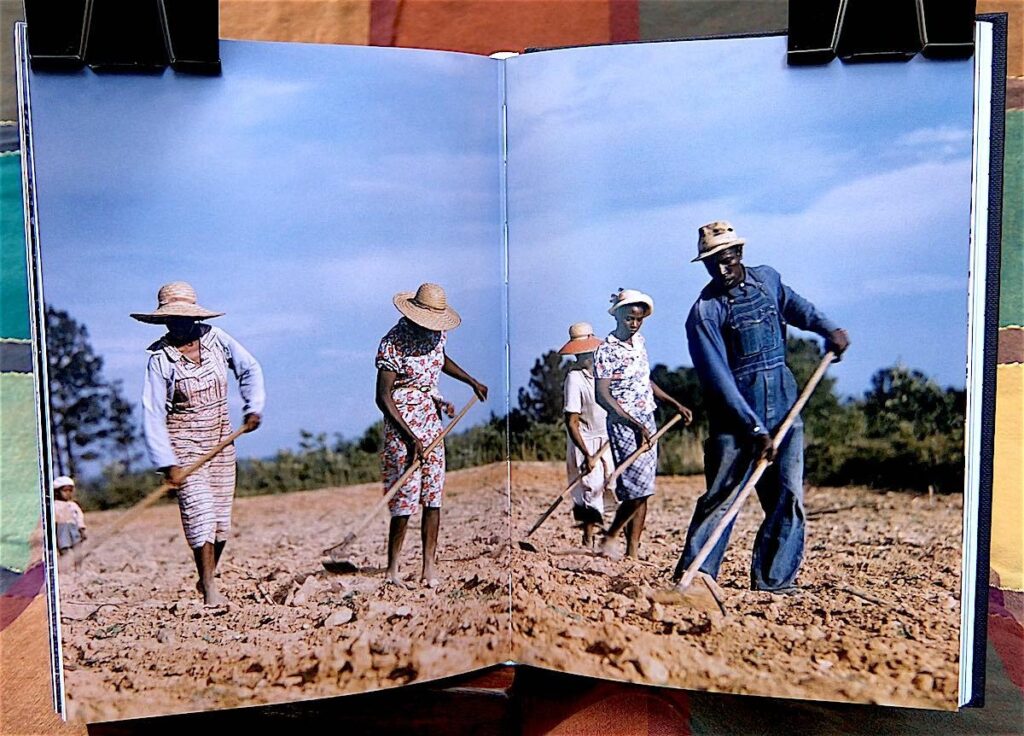

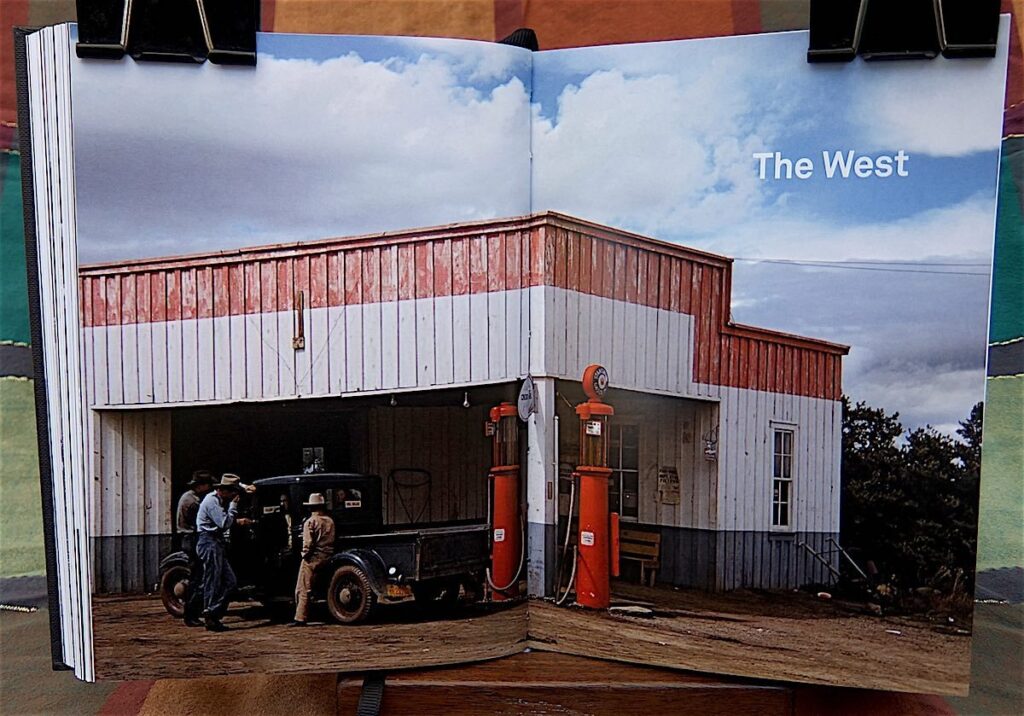
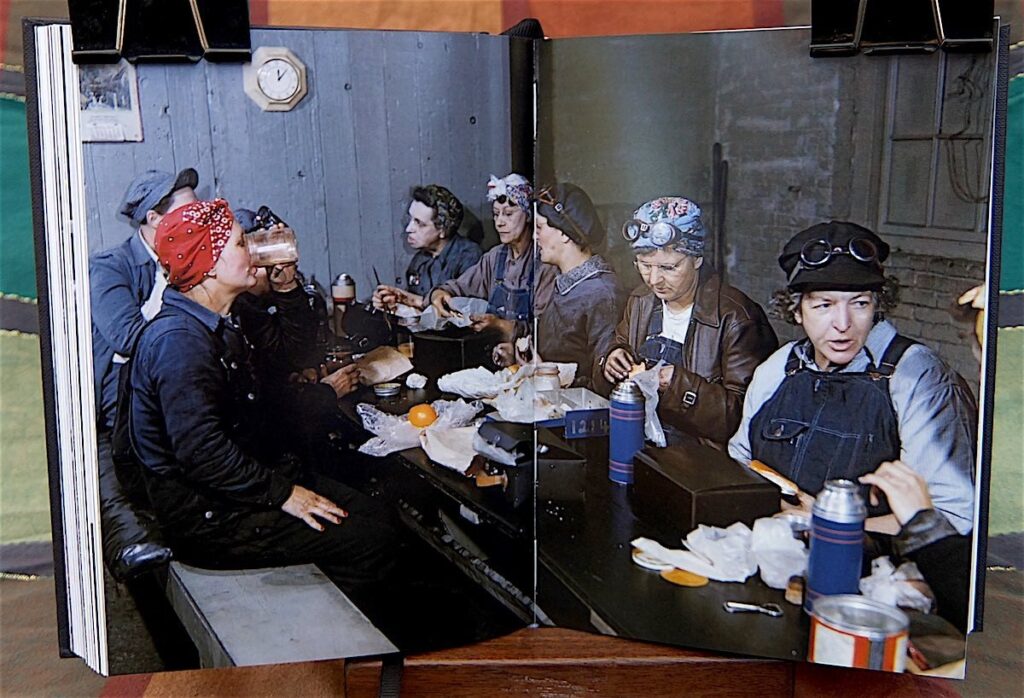
New Deal Photography: USA 1935-1943
by Peter Walther
Taschen
2016, 608 pages, 5.9 x 7.9 x 1.7 inches (hardcover)
If you purchase a copy of New Deal Photography: USA 1935-1943 by Peter Walther hoping to find iconic Farm Security Administration images, such as the migrant mother by Dorothea Lange or the father and his two sons running in a dust storm by Arthur Rothstein, you will not be disappointed. With almost 400 photographs filling its 608 pages, including numerous gems by Walker Evans, there’s plenty of room for the expected. But New Deal Photography goes well beyond these familiar images, powerful though they may be.
The book’s geographic organization forces us to consider Depression-era life in the Northeast and South, too, pushing our perspectives beyond the more familiar locations of Oklahoma and California. In addition, Walther’s collection of images features numerous color photographs by Russell Lee, Jon Collier, and Marion Post Wolcott. Again, we are used to seeing the era depicted in black and white, but seeing it in color confounds many of our expectations about what rural America actually looked like during those desperate years.
Walther’s essay for the book, which is printed in English, German, and French, presents a brisk but useful overview of the Farm Security Administration, from its founding mission to relocate Dust Bowl farmers in Oklahoma to greener pastures, to the photographs that were initially commissioned to document the relocation process. That might have been all the FSA did, but Walther introduces us to an FSA economist named Roy Stryker, who understood that photographs would do a much better job of telling the story of rural America in the late 1930s than any economic report ever could.
And Stryker didn’t just hire photographers to take the FSA’s pictures – he also hired artists, which is why painters like Ben Shahn were given Leica cameras and sent into the heartland of America. In the end, more than 10,000 photographs were shot, printed, and captioned, but there could have been a great many more. Apparently, Stryker punched holes in as many as 100,000 negatives he deemed unsuitable for the FSA’s collection, which means Walther’s New Deal Photography could have been even bigger. – Ben Marks
05/6/25





